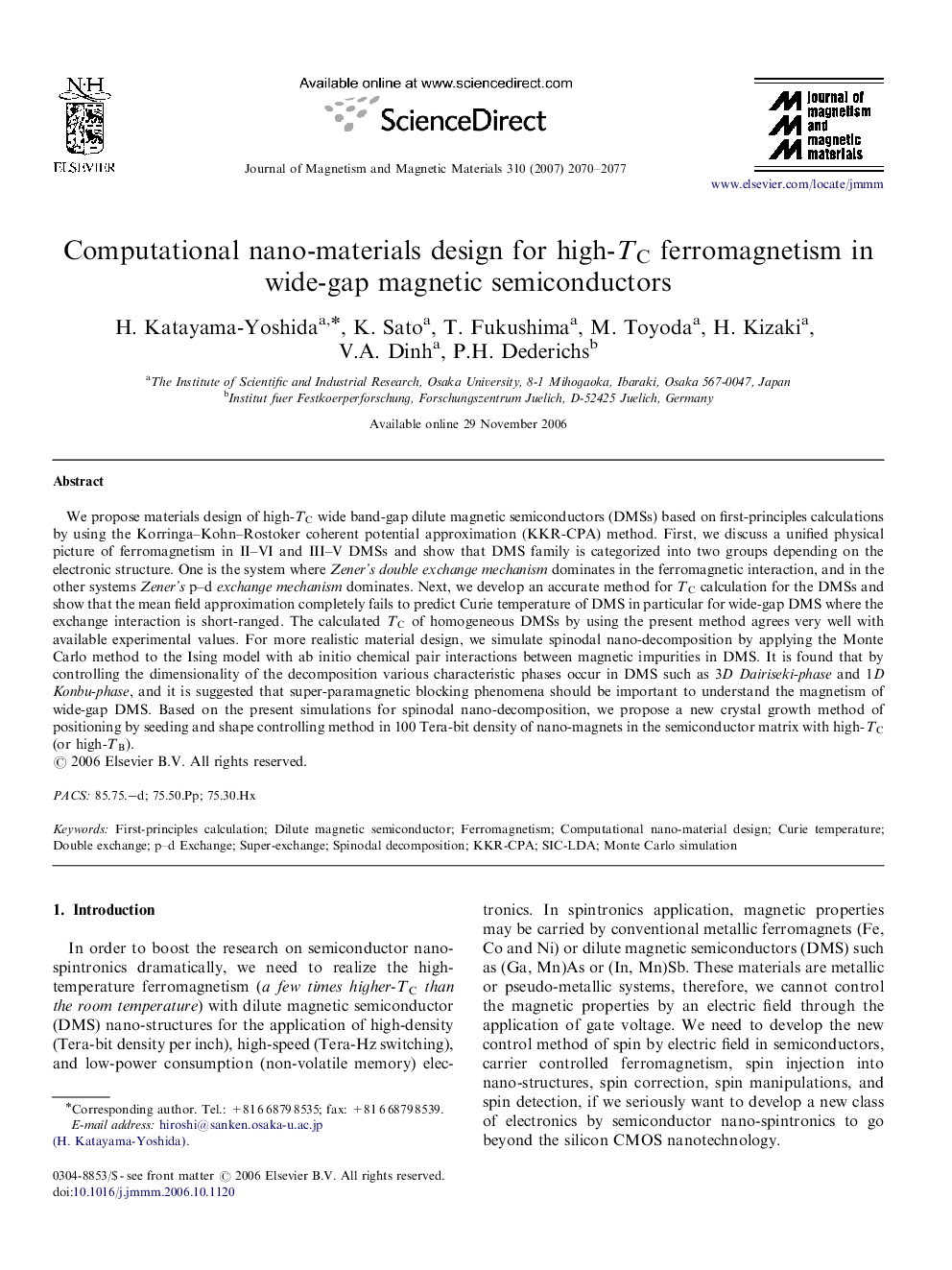| Article ID | Journal | Published Year | Pages | File Type |
|---|---|---|---|---|
| 1802133 | Journal of Magnetism and Magnetic Materials | 2007 | 8 Pages |
We propose materials design of high-TCTC wide band-gap dilute magnetic semiconductors (DMSs) based on first-principles calculations by using the Korringa–Kohn–Rostoker coherent potential approximation (KKR-CPA) method. First, we discuss a unified physical picture of ferromagnetism in II–VI and III–V DMSs and show that DMS family is categorized into two groups depending on the electronic structure. One is the system where Zener's double exchange mechanism dominates in the ferromagnetic interaction, and in the other systems Zener's p–d exchange mechanism dominates. Next, we develop an accurate method for TCTC calculation for the DMSs and show that the mean field approximation completely fails to predict Curie temperature of DMS in particular for wide-gap DMS where the exchange interaction is short-ranged. The calculated TCTC of homogeneous DMSs by using the present method agrees very well with available experimental values. For more realistic material design, we simulate spinodal nano-decomposition by applying the Monte Carlo method to the Ising model with ab initio chemical pair interactions between magnetic impurities in DMS. It is found that by controlling the dimensionality of the decomposition various characteristic phases occur in DMS such as 3D Dairiseki-phase and 1D Konbu-phase , and it is suggested that super-paramagnetic blocking phenomena should be important to understand the magnetism of wide-gap DMS. Based on the present simulations for spinodal nano-decomposition, we propose a new crystal growth method of positioning by seeding and shape controlling method in 100 Tera-bit density of nano-magnets in the semiconductor matrix with high-TCTC (or high-TBTB).
